Open Classic System Properties in Windows 10 version 20H2 | Mở chế độ classic khi xem thông tin cơ bản windows trên Win 10 phiên bản 20H2
Chào các bạn, Win 10 có nhiều version khác nhau. Ví dụ Win 10 Pro có version 10.0.18362, 20H2, 21H1...
Đối với các version mới gần đây như 20H2, 21H1 khi click phải This PC > chon Properties thì sẽ ra trang thông tin mới. Không giống như giao diện cũ nữa.
Để quay lại giao diện cũ, bạn tham khảo cách sau:
Windows 10 version 20H2, also known as 'October 20H2 Update', hammers one more nail in the coffin of the classic Control Panel. The System Properties applet that shows generic information about your PCs and also includes a few more links to other applets, is no longer accessible from anywhere in the GUI.
In every release, Windows 10 is getting more and more classic options converted to a modern page in the Settings app. At some point, Microsoft might remove the classic Control Panel completely. As of this writing, the classic Control Panel still comes with a number of options and tools which are not available in Settings. It has a familiar user interface which many users prefer over the Settings app. You can use Administrative tools, manage user accounts on the computer in a flexible way, maintain data backups, change the functionality of hardware and many other things. You can pin Control Panel applets to the taskbar to access frequently used settings faster.
The System Properties applet is now hidden in Windows 10 version 20H2. Regardless of the method you use to open it, it doesn't appear, bringing up the newest About page of Settings. If you click on the Properties context menu entry of This PC in File Explorer, or click on the System properties Ribbon command when This PC is opened, or press Win + Pause/Break on the keyboard, you'll end up with the Settings page. The classic applet no longer opens.
However, if you need to open the classic applet, it is actually still possible. As you may remember from my older article, Control Panel applets are available by CLSID (GUID) shell locations. So, for the system applet, all you need to do is to open the Run dialog and paste shell:::{BB06C0E4-D293-4f75-8A90-CB05B6477EEE} into it.
To Open Classic System Properties in Windows 10 version 20H2
- Press Win + R to open the Run box.
- Type
shell:::{bb06c0e4-d293-4f75-8a90-cb05b6477eee}and hit the Enter key.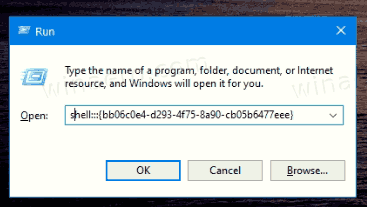
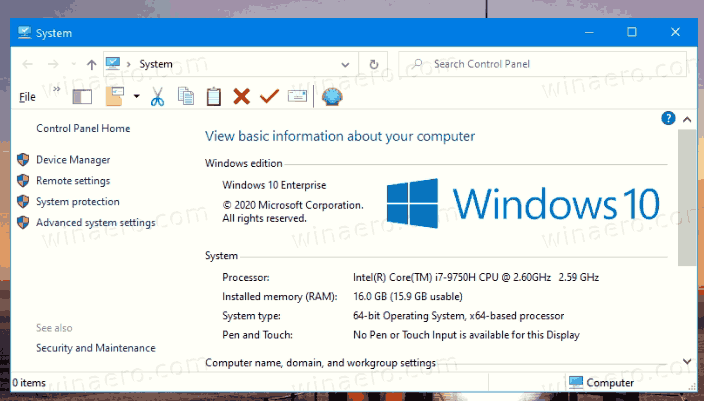
- Voila, the classic System Properties will open.
You are done!
Note: The above works in Windows 10 version 20H2. However, from what I observed here, in Windows 10 build 20241 the applet is completely REMOVED. So recent Insider Preview builds doesn't allow opening the applet anymore.
You can access the classic System Properties applet faster if you create a shortcut to open it. Here's how.
Create Classic System Properties Shortcut in Windows 10 version 20H2
- Right click the empty space on your Desktop. Select New - Shortcut from the context menu (see the screenshot).
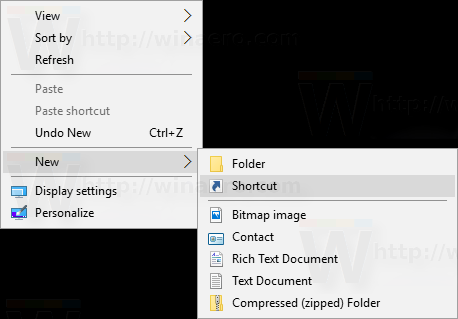
- In the shortcut target box, type or copy-paste the following:
explorer.exe shell:::{bb06c0e4-d293-4f75-8a90-cb05b6477eee}.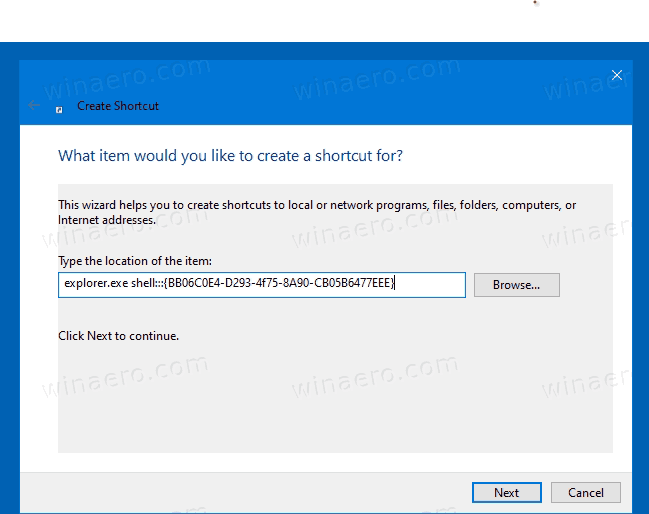
- Type System Properties for the name of the shortcut. Actually, you can use any name you want. Click on the Finish button when done.
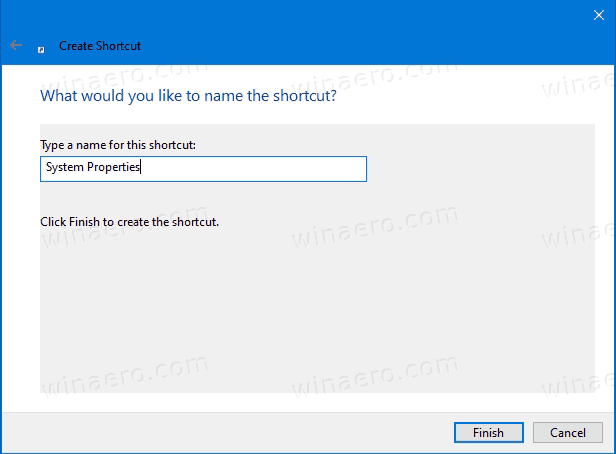
- Now, right click the shortcut you created and select Properties. Tip: See How to open file or folder properties quickly in Windows File Explorer.
- On the Shortcut tab, you can specify a new icon if you wish. You can use the icon from the
c:\windows\system32\shell32.dllfile.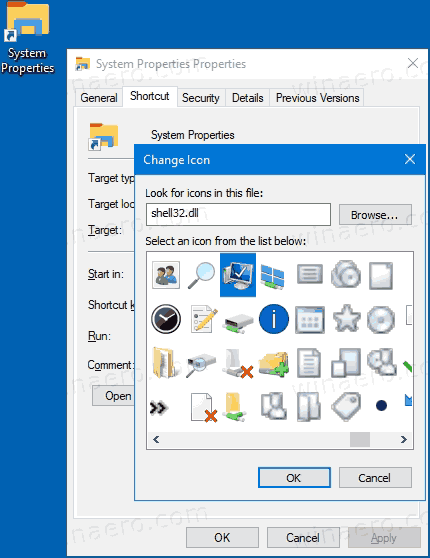 Click OK to apply the icon, then click OK to close the shortcut properties dialog window.
Click OK to apply the icon, then click OK to close the shortcut properties dialog window.
You are done!
Pro tip: You can save a lot of your precious time by using Winaero Tweaker. Use it for System Properties with Winaero Tweaker > Shortcuts > Shell Folder (CLSID) Shortcuts. Click on Select Shell Folders... button and find the System item in the list.
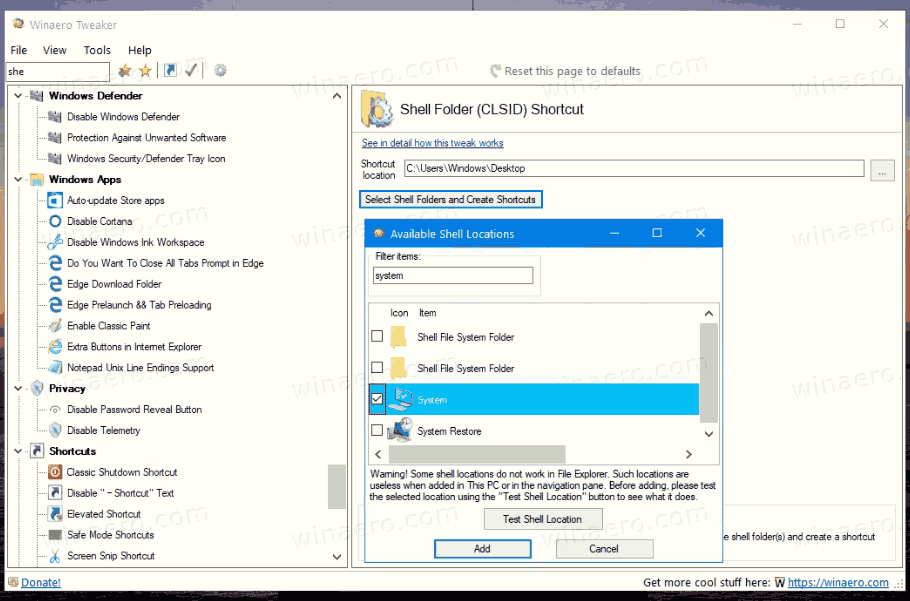
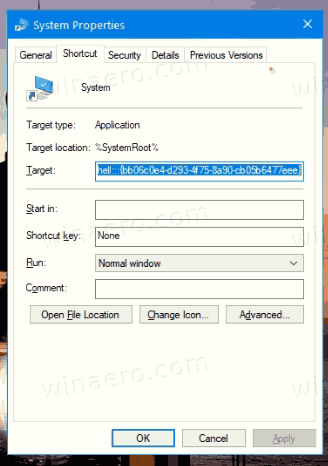
Now, you can move this shortcut to any convenient location, pin it to taskbar or to Start, add to All apps or add to Quick Launch (see how to enable Quick Launch). You can also assign a global hotkey to your shortcut.
Finally, you can add System Properties to the Navigation pane in File Explorer, that is on the left. Then it will be available in File Explorer with one click! This can be quickly done with Winaero Tweaker.
Add System Properties to the Navigation Pane in Windows 10
- Run Winaero Tweaker.
- Go to File Explorer > Navigation pane - custom items.
- Click on Add Shell Location.
- Find the System item in the list.
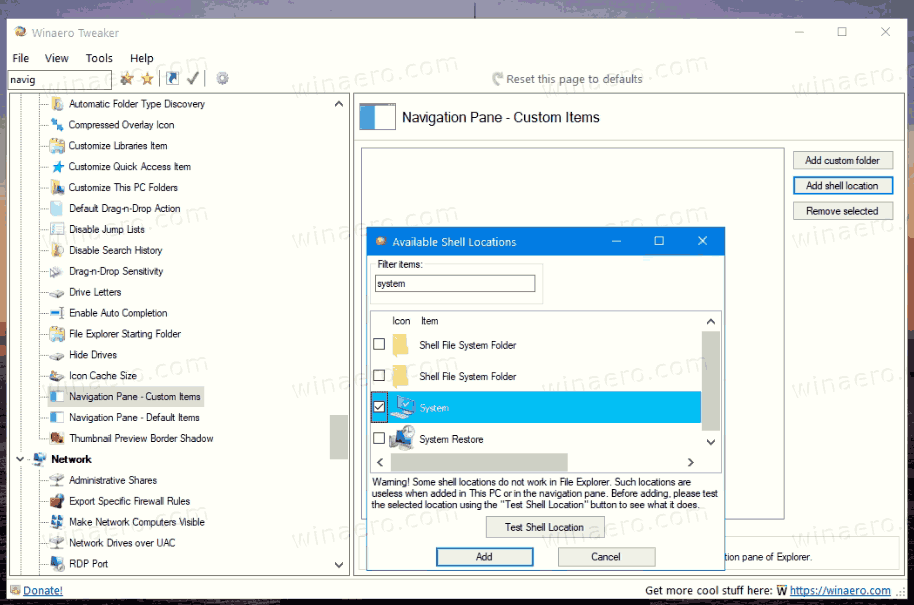
- Click on the Add button.
- Re-open File Explorer, and you will see the classic System Properties on the left.
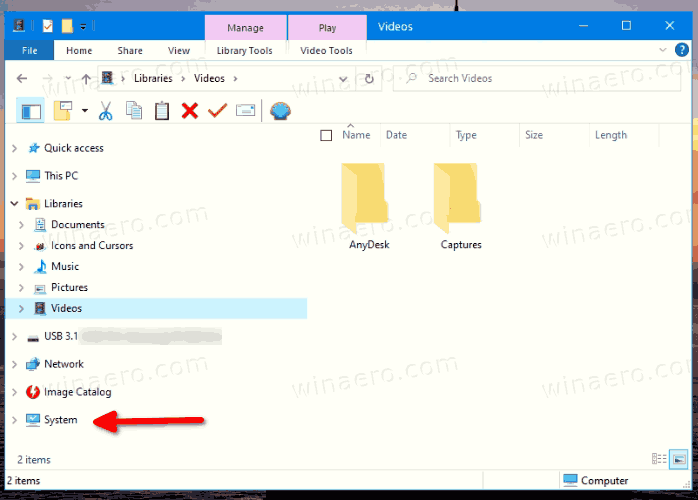
That's it!
Nguồn: https://winaero.com/open-classic-system-properties-in-windows-10-version-20h2/
Nhận xét
Đăng nhận xét